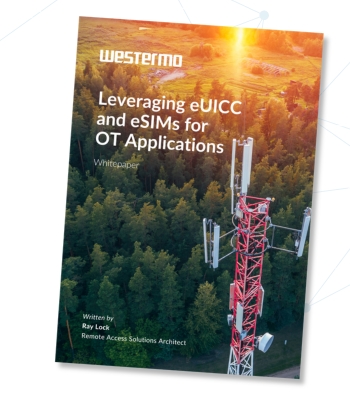Making the Right Choice: Public or Private LTE

When it comes to choosing between public LTE (4G & 5G) and private LTE ( such as 450MHz), there are several factors to consider. Each technology has its own set of opportunities and challenges, and the best choice will depend on your specific needs and requirements. Regardless of the type of network you choose, Westermo is here to support you every step of the way.
Opportunities with Private LTE
Large cells and fewer masts: This enables wide coverage with fewer infrastructure requirements, making it cost-effective for covering large, remote areas.
Better signal penetration: The lower frequency provides better penetration through buildings and obstacles, ensuring reliable communication even in challenging environments.
Dedicated network: With fewer users on the network, load is reduced ensuring consistent performance.
Blackout-proof construction: The networks are designed to be resilient and maintain communication during power outages.
Focused providers: Providers specialising in 450MHz LTE offer more dedicated services and support.
Long lifecycle: Utility networks using 450MHz LTE are expected to be available for 10/15+ years, which is crucial for critical infrastructure.
Cybersecurity: With 450MHz being a private network, it provides enhanced security features compared to public networks.
Network ownership: In owning a private network, users are able to have full control and management of their network.
Independent remote connectivity: 450 MHz can connect once isolated systems, often powered by solar or batteries, allowing for a holistic view of remote assets.
Challenges of Private LTE
Growing Availability: The availability 450 MHz cells are still in its early days, with expected growth similar to public LTE. Some countries are releasing different sections spectrum e.g. 421Mhz or 870Mhz.
Domain knowledge is essential: As an example, for 450MHz, the antennas must match the frequency, and standard cellular antennas cannot be used.
Lower bandwidth: Lower frequencies result in lower bandwidth.
Opportunities of Public LTE (4G and 5G)
Higher Speeds: LTE mobile offers fast data speeds, which is beneficial for high-speed internet access and data-intensive applications.
Improved Capacity: It can handle a larger number of simultaneous connections, which is especially advantageous in densely populated areas.
Wider Availability: LTE mobile networks are more widely available and offer a broader range of services and devices.
Advanced Technology: LTE mobile networks, especially 5G, are at the forefront of wireless technology, offering advanced features like network slicing and edge computing.
Support for a Wide Range of Devices: LTE mobile networks are supported by a wide range of industrial devices offering an abundance of options.
High speed and lower latency: LTE mobile networks provide a smoother and more responsive user experience for real-time data and industrial applications.
Challenges of Public LTE
Potential for Congestion: LTE mobile networks may experience congestion in densely populated areas, due to the wide availability.
Limited Coverage in Remote Areas: LTE mobile networks are primarily designed for population coverage and may not provide the same level of geographical coverage as 450 MHz LTE, which can be a disadvantage for utility infrastructure located in remote areas.
Higher Infrastructure Costs: Deploying LTE mobile networks, especially 5G, can be more expensive due to the need for more cell towers to cover the same area as a few 450 MHz LTE towers would cover.
Higher Power Consumption: Devices connected to LTE mobile networks may draw more battery, often relying on a dedicated power supply.
Frequent Upgrades: LTE mobile technology evolves rapidly, which may require more frequent upgrades to infrastructure and devices to keep up with the latest standards.
Cybersecurity: 4G and 5G LTE are connected to the Internet and therefore requires a more sophisticated cyber security efforts.
In conclusion, the choice public and private will depend on your specific needs and requirements. Consider all opportunities and challenges of each technology before making a decision. Whatever the network type, we have the edge equipment to meet your needs.

Private cellular networks
Private cellular networks offer security, control, and reliable connectivity for critical infrastructure and industrial applications. When it comes to building private networks, Westermo has the expertise and technology to support you every step of the way.
Explore private networks
450 MHz spectrum for critical utility communication
Wide coverage, enhanced penetration, and reliability make 450 MHz an excellent choice for private networks, especially those that require robust, wide-area coverage and secure, reliable communication channels.
Learn more about 450 MHz
Unlock the Power of eUICC eSIMs for OT Connectivity
This whitepaper offers actionable insights and practical guidance for industries relying on OT networks, helping you harness the full potential of eUICC and eSIMs to drive operational efficiency.
Get your free copyNuri Shakeer
International sales

For support inquiries, click here to contact Technical Support
